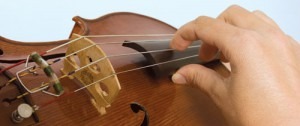
Ready for Pizzicato
Many composers, from Back to Benjamin Britten have used this technique for anything from religious music to string quartets to full symphonies.
We have Josef Strauss writing a Pizzicato Polka in 1869
Josef Strauss: Pizzicato-Polka (Vienna Philharmonic Orchestra; Carlos Kleiber, cond.)
and his brother, Johann Strauss II, writing the New Pizzicato Polka in 1892,
Strauss II: Neue Pizzicato-Polka, Op 449 (Vienna Philharmonic Orchestra; Riccardo Mut, cond.)
If you can imagine the effect of this sound during the Vienna New Year’s Balls after all the singing strings of the various waltzes – now the air is cleared.
One of the most interesting uses of pizzicato is in Tchaikovsky’s 4th Symphony, completed in 1878. The third movement is a twist on the classical minuet / trio form by making is a scherzo / trio but the scherzo is only played by plucked strings and the woodwinds come in for the contrasting trio section (01:50), followed by the brass. For the final return of the scherzo, both strings and winds play, but the strings only play pizzicato.
Tchaikovsky: Symphony No. 4 (Chicago Symphony Orchestra; Daniel Barenboim, cond.)
Listen closely to how Tchaikovsky uses dynamics to make contrasting loud and soft sections, and timbre when he thrown the sound through the string section from the first violins to the seconds to the violas, to the cello, and to the double basses. This is most apparent when you watch a live performance, but you can see (and hear) it to some extent on this video.
Teachers warn students to pluck the pizzicato on the fingerboard, not below with where you usually bow because the oil from your fingers will affect the lubrication (rosin) on the string. You should be using the pads of your fingers, not your fingernails (this isn’t a guitar!), and you’ll need to brace your hand against the fingerboard.
If it’s just a short section of pizzicato, then most string players hold the bow in their hand at the same time, but for the 5 minutes of the Tchaikovsky Scherzo movement, it’s bows down for everyone!



